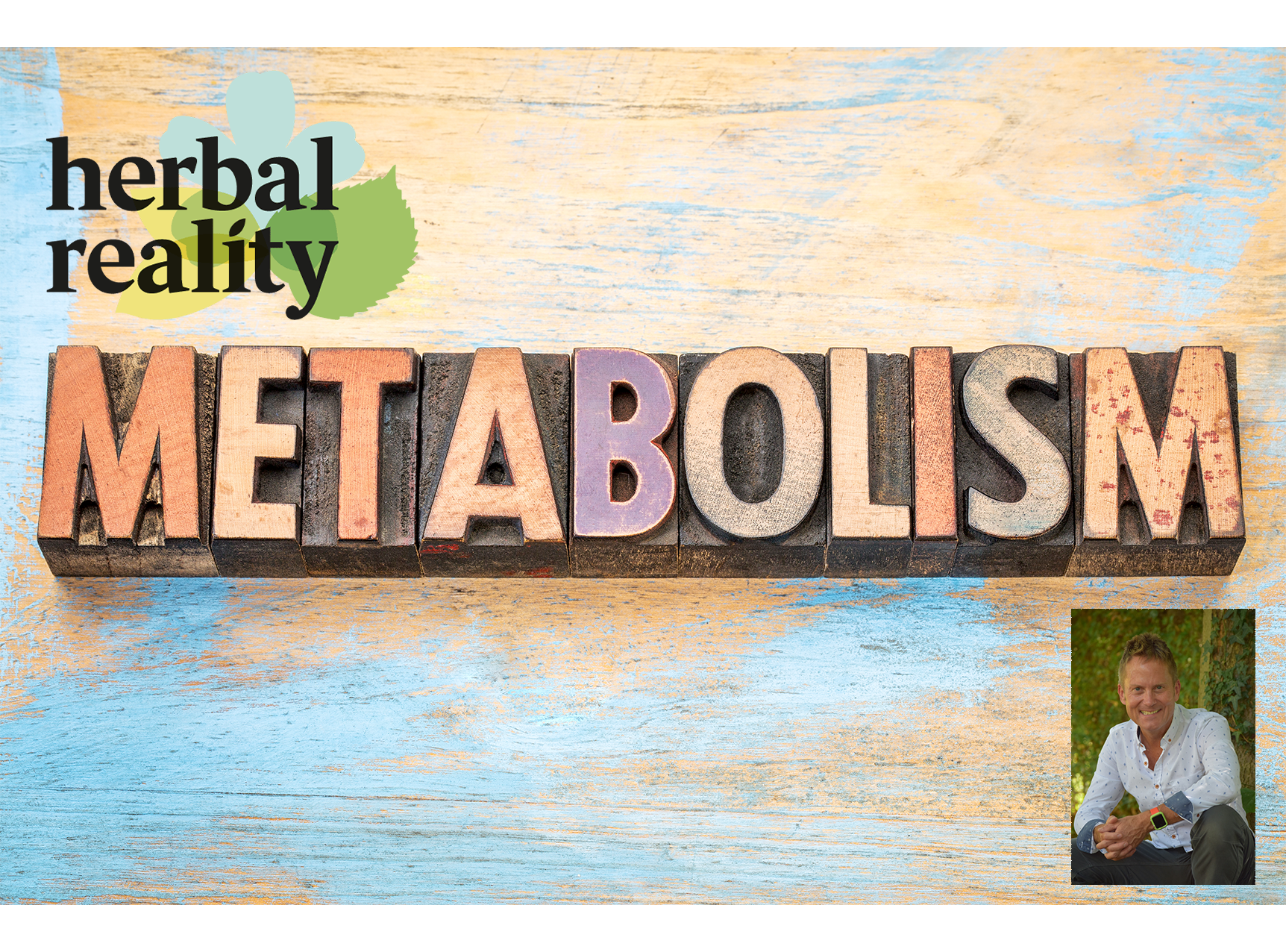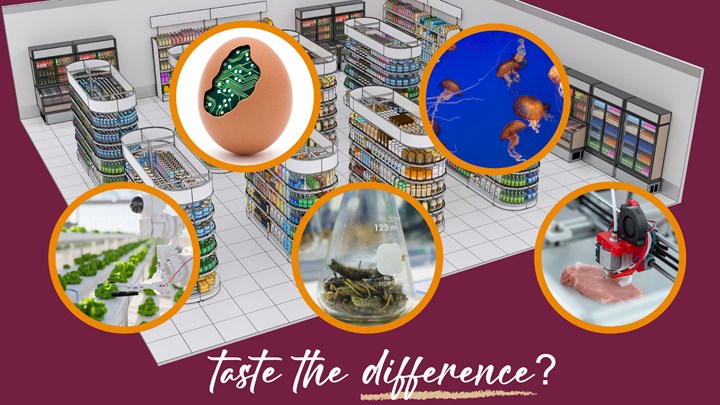Content Sections
In life prior to the current pandemic, public health efforts were heavily focused on how the metabolic crisis might be managed, as it underpins the biggest killer diseases in the industrialised world, from coronary heart disease, type 2 diabetes and obesity, to many types of cancer. It also has massively fanned the flames of the covid-19 crisis, as those with cormordities that include dysfunctions in metabolism have been by far the most vulnerable to severe disease and death.
Outward signs may be over-sized waistlines and excess fat-to-lean muscle. But it's the inward signs, such as low-grade systemic inflammation, oxidative stress, visceral fat and immune system dysregulation, that are often more sinister.
The reality of herbs
Last week saw the publication of a new article by Rob Verkerk PhD on the Herbal Reality website, that's becoming an evermore important repository of information about the healing power of plants and herbal medicine. The website is now overseen by a charity and the newly established Herbal Expert & Research Body or H.E.R.B. of which Rob is one of 8 members.
In his article, Rob delves into the underlying causes of the metabolic disease crisis and how the power of plants can be brought to bear to help regenerate health and reverse the crisis.
Following are some extracts from the article. The original article (3,600 words, 25 min read) is available in full on the Herbal Reality website.
Under the skin of the metabolic disease crisis
Extracts by Robert Verkerk PhD
The metabolic disease crisis afflicts a large part of the global population, particularly those in higher-income and emerging industrialised countries, and represents the single largest preventable, non-communicable disease burden in these countries. The covid-19 pandemic has shone a spotlight on how a single viral pathogen can exploit comorbidities that are the result of metabolic dysfunction, creating havoc in its wake. It is surely also a reminder of the urgent need to address the underlying metabolic crisis, especially among younger members of society who will otherwise become extremely vulnerable both to chronic and infectious diseases.
Obesity, type 2 diabetes and ischaemic heart disease are three of the most pronounced downstream manifestations of the metabolic crisis.
- Robert Verkerk PhD
However, increasingly, many types of cancer are considered to have a metabolic basis, while the rapid rise in prevalence of Alzheimer’s and dementia in industrialised countries is also thought to be, at least partially, mediated by metabolic disturbance, hence the increasingly common reference to type 3 diabetes.
Key factors associated with metabolic disease
Among the plethora of factors associated with the increased or reduced risk of metabolic diseases that contribute to many of the leading causes of preventable and premature deaths, notably ischemic heart disease, stroke, some cancers (breast, prostate, colorectal), obesity, type 2 diabetes and low bone mineral density, are the following:
- Dysregulated energy and glucose metabolism
- Excessive and overly-frequent intake of sugars and refined carbohydrates, in association with reduced fibre intake, that contribute to chronically raised blood sugar (hyperglycaemia) and subsequently insulin resistance
- Dysregulated lipid metabolism, in particular the inability to beta-oxidise (burn) fatty acids in adipose tissue and the development of non-alcoholic fatty liver
- Dysregulated ‘cross-talk’ between adipocytes in adipose tissue (subcutaneous fat), macrophages (immune system) and neurons (nervous system)
- Hormonal dysregulation of appetite, a complex process involving multiple hormones including ghrelin (hunger), leptin (satiation) and adiponectin (fat burning). Apart from involving the endocrine system, it also involves the gut and its microbiome, the brain, the central and autonomic nervous systems, the immune system, adipose tissue and a large number of signalling compounds and nutrient-sensing systems such mTOR and AMPK
- Low bone mineral density caused by disturbances to metabolism of calcium, other minerals and low circulating vitamin D status
- Low grade, chronic systemic inflammation and oxidative stress
- Chronic stress and inadequate quantity and quality of sleep
- Exposure to air pollution and environmental toxins
- The bidirectional relationship between physical inactivity and obesity
- The prevalence of obesogenic environments and ‘anthropogens’ (human-made environments, their by-products and/or lifestyles encouraged by these, some of which may be detrimental to human health)
- Social determinants of metabolic disease including socio-economic status, structural and cultural factors
- The interplay of genetics and epigenetics in gene expression
Systems approaches, not silver bullets
Despite the obvious difficulties in modifying some of the determinants of metabolic disease, such as underlying genetic predisposition or an individual’s place of residence or work, there are a very large number of factors that can be altered in ways that can, sometimes dramatically, improve health outcomes.
Even an individual’s genetic predisposition can be altered by changing the inner and outer environment to which the individual is exposed, which in turn changes the pattern of gene expression (i.e. epigenetics).
- Robert Verkerk PhD
Four over-arching priorities are identified below. These are open to modification, optimal outcomes often being realised when interventions or protocols are personalised, following guidance by the individual’s health practitioner, around the specific needs, capacities and environments experienced by the individual.
- Restoring blood sugar metabolism and metabolic flexibility
- Facilitating physical activity and mitochondrial biogenesis
- Anti-inflammatory dietary patterns
- Stress transformation and sleep quality
Conclusions
It is clear that top-down public health measures have had little impact on curtailing the spiral of metabolic disease that is running rampant through the majority of the industrialised world. The impact caused by SARS-CoV-2 is a reminder of how pathogens can interact with unhealthy, imbalanced body systems and cause severe disease and societal disruption….
>>> Click here to read the full article.
>>> Become a member of ANH International for price of one hot drink a month in a café!
>>> Back to homepage









Comments
your voice counts
There are currently no comments on this post.
Your voice counts
We welcome your comments and are very interested in your point of view, but we ask that you keep them relevant to the article, that they be civil and without commercial links. All comments are moderated prior to being published. We reserve the right to edit or not publish comments that we consider abusive or offensive.
There is extra content here from a third party provider. You will be unable to see this content unless you agree to allow Content Cookies. Cookie Preferences